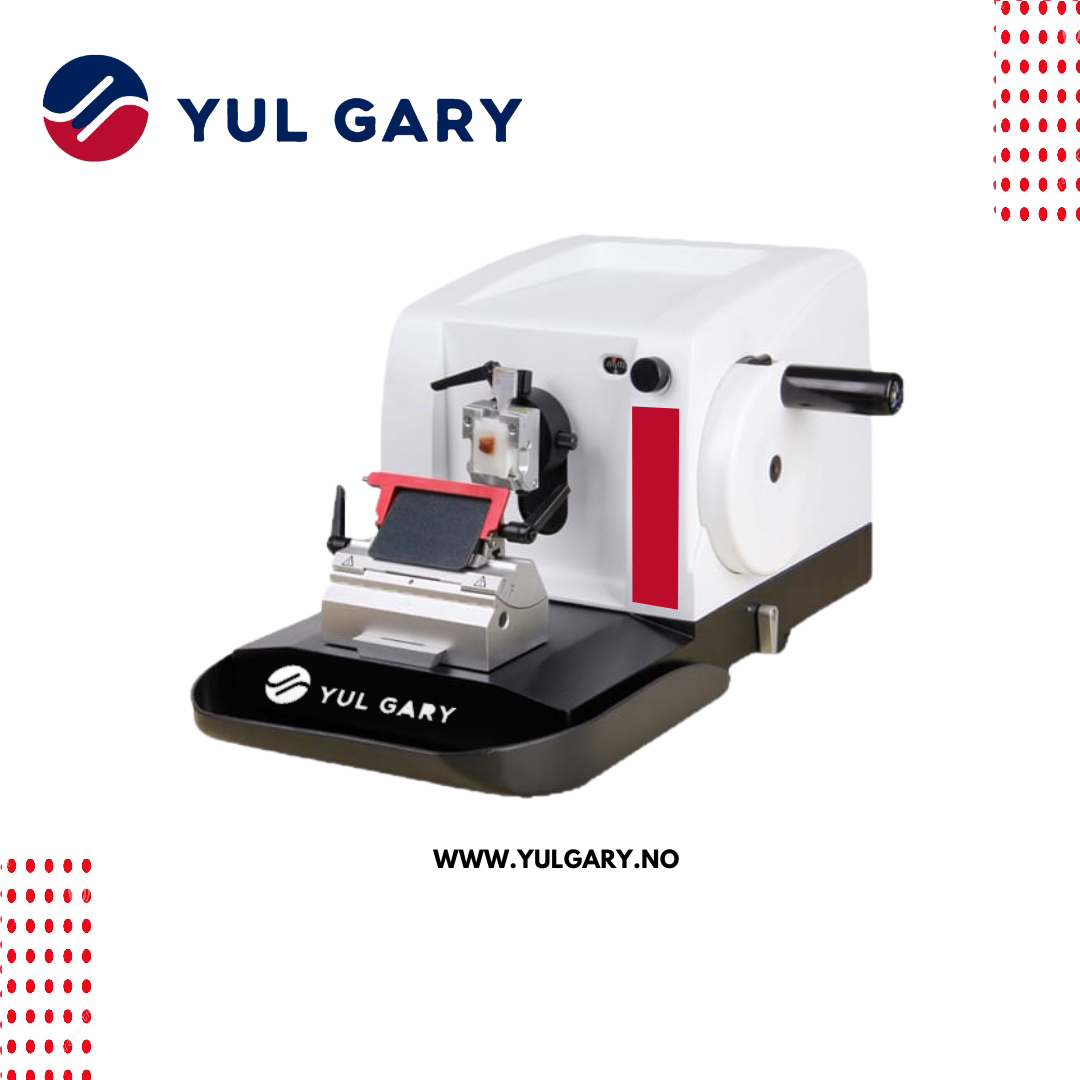The Manual Microtome YG0118 by Yul Gary represents a leap in microtome technology, emphasizing precision and ease of use in sectioning specimens. This device is designed specifically for laboratory environments where high accuracy is paramount. It features an adjustable blade holder and fine-tune specimen orientation, making it versatile for various histological tasks. One of its standout attributes is its ergonomic design, which helps minimize user fatigue during extended use. Additionally, it boasts a robust construction that ensures longevity and consistent performance.
On the other hand, the HM325 Rotary Microtome by Thermo Scientific is renowned for its reliability in producing thin sections. This microtome caters to a wide range of tissue slicing needs, providing users with precision and ease. Its standout features include a user-friendly interface and a high degree of automation, which are essential for high-throughput laboratories. This microtome is preferred for its stability and consistent sectioning capabilities, making it indispensable for routine histology. However, it relies more on automated operations, thus limiting manual adjustments that some experienced technicians might prefer.
| Feature | Manual Microtome YG0118 (Yul Gary) | HM325 Rotary Microtome (Thermo Scientific) |
|---|---|---|
| Blade Type | Adjustable | Fixed, Automated |
| User Ergonomics | Ergonomic Design | Standard |
| Automation Level | Manual Precision | High Automation |
| Construction | Robust, Durable | Sturdy |
How They Work
The Manual Microtome YG0118 operates by allowing direct manual control over the specimen’s orientation and blade depth. This flexibility is beneficial in obtaining precise, tailored sections. The user can adjust settings in real-time, offering an advantage when dealing with varying specimen types.
The HM325 Rotary Microtome relies heavily on automation for precision. After configuring initial settings, the microtome operates with minimal manual intervention, slicing tissues uniformly. Such an approach is ideal for bulk sectioning needs within high-paced laboratory settings.
Applications
Both microtomes serve similar purposes in the laboratory setting, primarily used for slicing specimens into thin sections for examination under a microscope. The Manual Microtome YG0118 is preferred for detailed manual work, often required in specialized research settings that demand customization for each specimen. Meanwhile, the HM325 Rotary Microtome is optimal for high-frequency tasks in diagnostic labs, where standardized sectioning is key.
Types
Microtomes come in various forms, including rotary, sliding, and freezing variants. The Manual Microtome YG0118 falls under the manual rotary type, allowing precise cuts with adjustable configurations. The HM325 Rotary Microtome is an automated rotary type, primarily catering to workflow efficiency in clinical settings.
Market Pricing
In the market, microtome prices vary based on features and functionalities. The Manual Microtome YG0118 is competitively priced, generally in the mid to high-range bracket, offering a balance of quality and cost. The HM325 Rotary Microtome tends to be on the higher end, reflecting its automation and advanced functionalities designed for high-volume laboratories.
Frequently Asked Questions
What is a microtome used for?
A microtome is utilized for cutting extremely thin sections of materials such as tissues, that require microscopic examination.
Is the Manual Microtome YG0118 suitable for beginners?
While designed with advanced features, the Manual Microtome YG0118’s ergonomic design makes it accessible for both beginners and experienced users.
Does the HM325 Rotary Microtome support manual adjustments?
Primarily automated, this microtome offers limited manual adjustments, focusing more on high throughput sectioning.
Advantages and Disadvantages
The Manual Microtome YG0118 offers unparalleled control and precision for detailed laboratory work, with the advantage of a design that reduces operator fatigue. However, it might present a learning curve for those new to manual configurations.
The HM325 Rotary Microtome brings high efficiency and throughput via automation, but this can also mean less adaptability for tailored, manual specimen adjustments.
Usage in the Field
In practical scenarios, the Manual Microtome YG0118 is ideal for research and studies requiring flexibility and precision in specimen handling. It provides users with an opportunity to adjust and tailor each cutting for specific research needs. The HM325 Rotary Microtome, being geared toward automation, fits seamlessly into routine workflows in diagnostic and clinical laboratories, speeding up bulk preparations.
Recommendations
For those utilizing the Manual Microtome YG0118, regularly maintaining the blade and ensuring correct calibration is crucial for maintaining precision over time. Proper training in manual manipulation can also enhance the user’s confidence and proficiency. For the HM325 Rotary Microtome, regular machine updates and maintenance, in alignment with manufacturer guidelines, are recommended to ensure longevity and consistent automated performance.
If you’re looking for a fusion of innovation and quality, you’ve come to the right place. At Yul Gary, we offer the luxury to explore our exclusive catalog of laboratory equipment. Each piece is crafted with a level of excellence. Hesitate no more, we bring science to life—it’s time to be part of our community. https://yulgary.no/product/manual-microtome-yg0118/.



